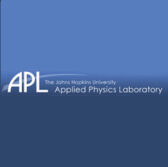 Phycisists at the Johns Hopkins University Applied Physics Laboratory have developed a computer model to predict how radio interference source in the atmosphere could affect communications.
Phycisists at the Johns Hopkins University Applied Physics Laboratory have developed a computer model to predict how radio interference source in the atmosphere could affect communications.
APL physicists designed the model to detect the movement of “space bubbles” after they form and predict the plasma bubble’s course by collecting data from satellite-based systems and using wind models, Johns Hopkins APL said Tuesday.
Joseph Comberiate, a space physicist at APL and a coauthor of the new study, said the lab created the model for soldiers to forecast future occurrences of communications interference by using the computer model, then resort to alternative means of communication.
Comberiate and Michael Kelly from APL theorized that the plasma bubbles were responsible for the communications blackout between military officers in Bagram, Afghanistan and a Chinook helicopter tasked to rescue U.S. Navy SEALS during the battle of Takur Ghar in Afghanistan in 2002.
Comberiate worked to gather satellite images from the Global Ultraviolet Imager instrument aboard a NASA spacecraft and convert the two-dimensional images into three-dimensional models of plasma bubbles to validate the theory.
The APL team is working to validate the new model for future military operations and the study has been approved for publication in a journal of the American Geophysical Union.




